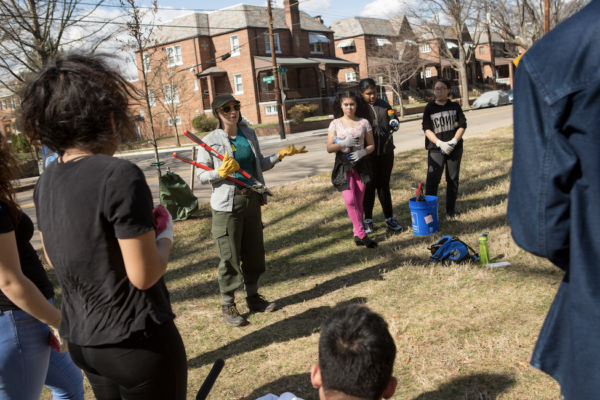This piece appeared as a commentary in The Hill.
This May, more than 1.3 million college graduates will enter the workforce burdened by record-high college debt, daunting housing costs, surging unemployment and a looming recession.
One way to help them navigate this modern-day Scylla and Charybdis is to expand national service. Through its AmeriCorps program, the federal Corporation for National and Community Service places some 75,000 workers, the majority of them younger than 24, in helping roles through nonprofits and other partnerships that match the agency’s federal funding. The program provides up to a year of employment and helps with tuition or student debt.
With an infusion of stimulus money, the program could put more recent graduates to work in sectors hit hard by the coronavirus pandemic.
That includes the nation’s elementary and secondary schools, which have already been using AmeriCorps members to tutor struggling students, help teachers make lesson plans and run afterschool programs. When students return to schools in the fall, many are going to need additional support to make up for the learning they’ve lost this spring.
The Coronavirus Aid, Relief and Economic Security (CARES) Act, approved in late March, protects current AmeriCorps members’ educational benefits in the event they can’t work during the pandemic, waives some age and length-of-service restrictions and lets the federal agency carry over unused funds into the next fiscal year.
[Read More: What the Congressional Covid Funding Means for K-12 Schools]
But the next stimulus package should do much more. Advocacy groups are urging Congress to appropriate $500 million more in emergency funding for national service programs. Some 30 members of Congress recently signed a letter urging House leaders to expand the national service infrastructure.
Democratic Sens. Edward Markey (Mass.) and Chris Van Hollen (Md.) have just introduced a bill that would increase AmeriCorps from 75,000 to 500,000 members and double the stipend that members receive, among other steps to expand service programs. Lawmakers and the Trump administration should support these strategies. On April 22, two senators joined seven other Democratic senators in introducing a bill calling for an even bigger expansion.
In 2009, President Obama adopted a similar approach when he signed the Edward M. Kennedy Serve America Act, reauthorizing and expanding national service programs administered by the federal government to help put Americans to work in the wake of the Great Recession.
That year, Congress provided an extra $200 million for national service programs, which translated into nearly 15,000 additional AmeriCorps workers, who staffed food banks, weatherized homes, supported health care workers and fanned out into schools to help support administrators, teachers and students.
Come fall, or whenever students return to classrooms, these workers would be even more valuable. Schools and districts facing tight budgets, high absenteeism rates and widening achievement gaps could use national workers as cost-effective support systems. They could tutor students who have fallen behind. They could help students who have fallen out of the habit of attending school and need nudging to come regularly. They could also act as a line of communication between schools and families.
[Read More: Chronic Absenteeism in the Time of Coronavirus]
City Year, a nonprofit that places AmeriCorps members in schools, currently serves 51 school systems. The program deploys “near peers,” recent college graduates who supplement the work of teachers and administrators. Many are continuing to work in the wake of widespread school closings this spring, serving school meals from school buses and supporting schools’ communications with families.
A 2018 Deloitte white paper on City Year’s return-on-investment found the program to yield an additional 15,700 learning hours a year through increased student attendance and City Year-supplied after-school programming. It also produced the equivalent of an additional month of learning on standardized tests. In Chicago, students in schools served by City Year attended about six days more a year than others in similar schools, researchers found.
City Year could step in quickly; a number of the 29 cities that the organization currently serves are among the hardest hit by the coronavirus, including Boston, New Orleans, New York, Seattle and multiple cities in California and Florida.
Creating meaningful opportunities for college graduates entering the workforce and providing support to the nation’s battered public-school system is a win-win. As important, perhaps, is that national service workers come away with a heightened commitment to civic engagement. A study of City Year alumni found they were more likely than peers to stay engaged in civic life, either in their work or by belonging to a community organization. City Year notes that 47 percent of its alumni work in education, including 16 percent as classroom teachers.
Expanded congressional funding under the next stimulus package would give the class of 2020 opportunities to build on that legacy.


